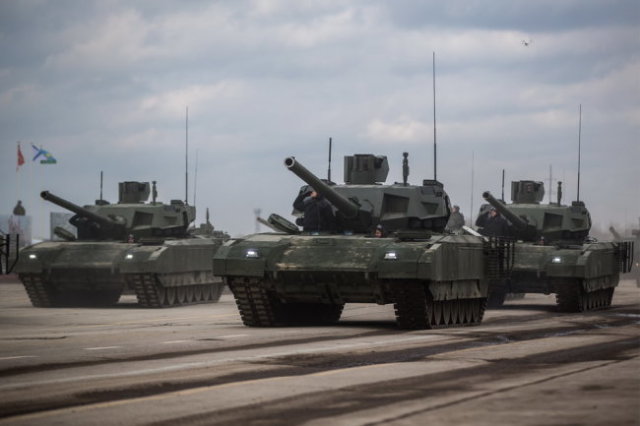Russia already has the research and production potential to create a new generation main battle tank (MBT). In particular, it will be distinguished from existing models by increased survivability due to air defense and upper hemisphere protection, as well as control using voice commands.
The relevant theses were announced at a scientific and practical conference at the Kazan Higher Tank Command School. Its main speakers were the head of the school, Major General Kirill Kulakov, and the general director - chief designer of the Ural Design Bureau of Transport Engineering Andrey Terlikov, according to Krasnaya Zvezda.
It is assumed that the crew of the future MBT, as in the T-14 "Armata", will consist of three people, and all of them should be interchangeable. The control of all weapons must be brought both to the workplace of the gunner-operator and the tank commander. The tank should also be integrated into a promising automated tactical control system (ACS TK). In the main mode, the interface should be controlled by voice.
The basic condition is the detection and destruction of targets at distances of more than five kilometers. The main armament of the tank remains a cannon. It should ensure the use of ammunition of increased power, as well as ammunition based on new physical principles. To determine the appearance of the promising "cannon-shot" complex, a number of research works were carried out, the main conclusion of which is that to ensure the armor penetration of the developed sub-caliber projectiles, an increase in the energy intensity of the new gun is required.
Also, as part of the tank's armament complex, according to experts, a remotely controlled anti-aircraft machine gun is needed. In addition, for the first time in the domestic tank building, the issue of creating a complex for protecting the upper hemisphere has been worked out. It should be noted that now active protection systems are being tested not only on the most modern Russian tanks, but also on older models like the T-72, which are undergoing modernization.
As for the engines, their power should be at least 1500 horsepower (now such tanks are put only on the Armata), while the power plant should be multi-fuel. As an option, the transition from a transmission with an on-board gearbox to a hydro-mechanical transmission with a full-reverse gearbox and a hydro-volume transmission in the turning mechanisms was also discussed. Prospects - installation of an automatic gearshift system and a duplicated tank movement control system from the commander's seat.
Alexey Ivanov


